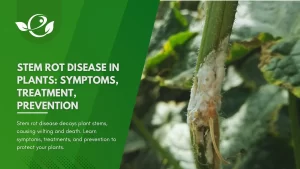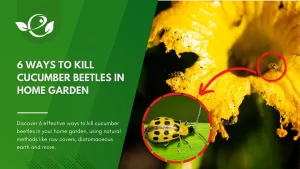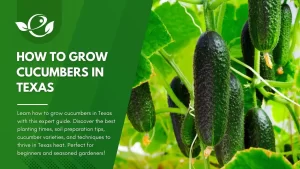Table of Contents
Whether you’re hiking through the woods, gardening in your backyard, or exploring a local park, one accidental brush with poison ivy can lead to days of unbearable itching and discomfort. The key to avoiding this pesky plant? Knowing how to spot it before it’s too late. In this comprehensive guide, you’ll learn how to identify poison ivy with ease using seven reliable methods. With expert-backed information and visual clues, you’ll be able to walk confidently through nature without fear of an itchy encounter.
7 Easy Ways to Identify Poison Ivy Instantly
1. Look for the Classic ‘Leaves of Three’ Pattern
The most well-known and reliable identifier of poison ivy is its distinctive leaf arrangement: three leaflets growing from a single stem. The adage “Leaves of three, let it be” is more than just a rhyme; it’s a crucial rule of thumb for anyone spending time outdoors.
Each compound leaf of poison ivy consists of three pointed leaflets. The center leaflet typically has a longer stalk, while the two side leaflets attach directly to the stem or have much shorter stalks. This configuration sets poison ivy apart from many other native plants, although it still has several look-alikes.
The edges of the leaves may be smooth, lobed, or slightly toothed, and it’s not unusual to find variation in leaf shape even on the same plant. In early spring, the leaves often appear reddish or bronze before turning green in the summer. During fall, they can transform into stunning shades of red, orange, or yellow—a dangerous beauty if you’re unaware of what you’re touching.

Identifying this tri-leaf pattern is your first defense against accidental exposure. Whether the plant is a creeping vine, a ground cover, or a shrub, the three-leaf cluster is consistent across all growth forms.
2. Notice the Leaf Shape and Texture
Once you spot the classic three-leaf grouping, the next step in identifying poison ivy is to examine the shape and texture of the leaves. While the plant shows a lot of natural variability, some characteristics are typical.
Shape
- The center leaflet tends to have a distinct, slightly lobed appearance, often resembling a mitten or teardrop.
- Side leaflets are usually smaller and may be asymmetrical or irregularly lobed.
- Some leaves are smooth-edged, while others may have small notches or teeth.
Texture
- Poison ivy leaves often have a glossy surface, especially during the summer when they’re fully matured.
- In some cases, the leaves may appear dull or slightly fuzzy, particularly in early growth stages.
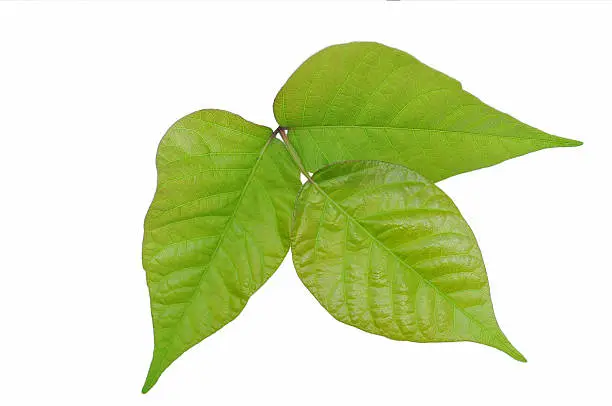
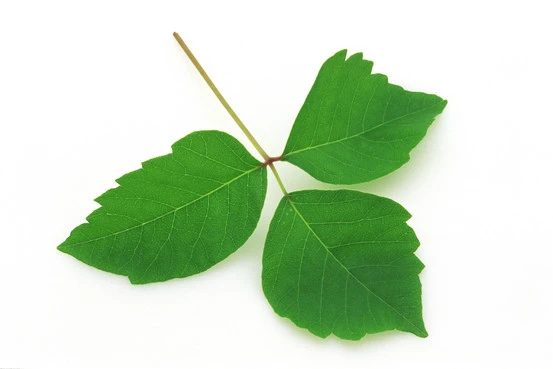
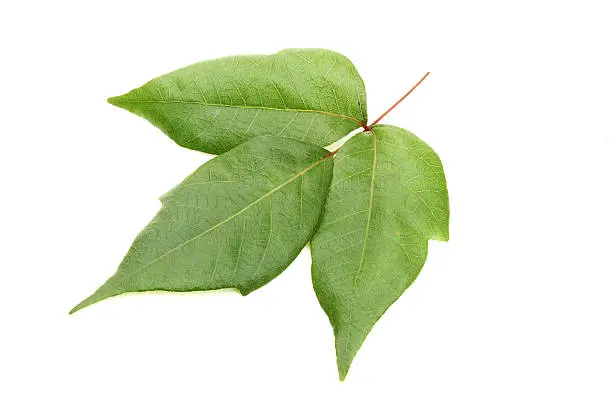
Recognizing these subtle details helps differentiate poison ivy from non-toxic plants. Glossy, irregularly shaped leaves with asymmetrical lobes or slight teeth are strong indicators of poison ivy.
3. Observe the Growth Pattern (Vines, Shrubs, or Ground Cover)
One of the most deceptive characteristics of poison ivy is its ability to grow in multiple forms, making it adaptable and harder to recognize.
Climbing Vines
In many regions, poison ivy climbs trees, fences, and poles using hairy, aerial rootlets. These brownish, fibrous roots look like little tendrils clinging to surfaces. Unlike other climbing plants such as Virginia creeper (which uses tendrils with suction pads), poison ivy vines lack defined structures and have a shaggy appearance.
Low Shrubs
Poison ivy can also grow as freestanding woody shrubs, particularly in open fields or forest edges. In this form, the leaves are more spread out and the plant may appear bushy.
Ground Cover
In more shaded or damp environments, poison ivy often sprawls across the forest floor. As a ground-hugging creeper, it sends out horizontal runners and can quickly form dense mats underfoot. This is especially dangerous because it can blend in with grass or leaf litter.
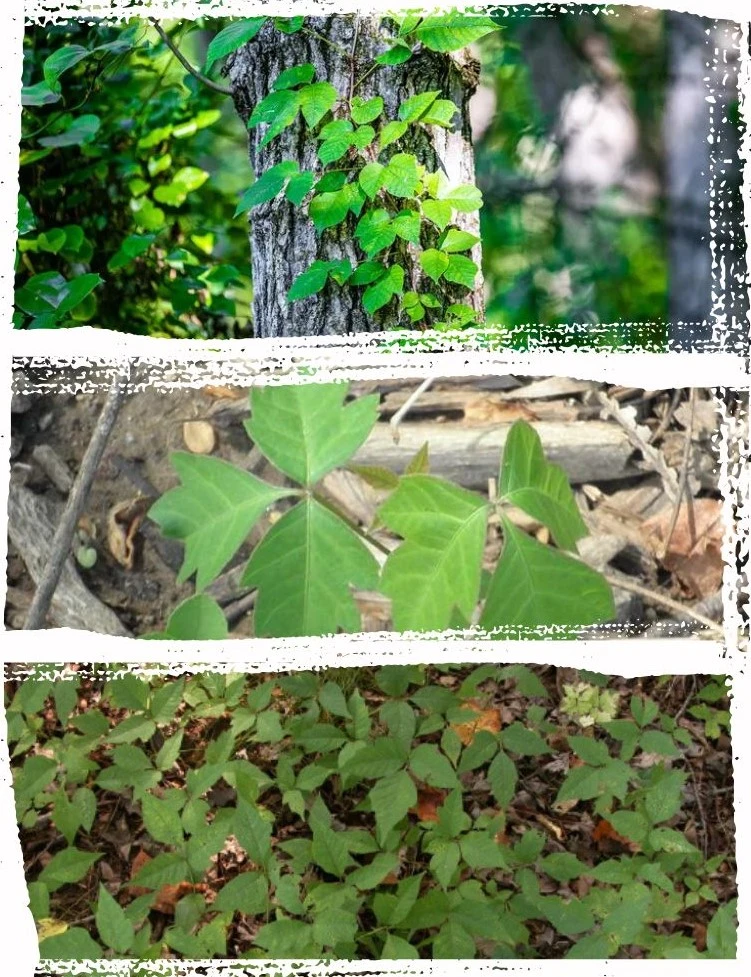
Understanding these various growth habits is crucial when trying to identify poison ivy in diverse landscapes. Whether it’s climbing, creeping, or standing tall, poison ivy has mastered camouflage.
4. Watch Out for Red Stems and Shiny Leaves
Another important clue to help you identify poison ivy is the color and texture of the stems and leaves. These characteristics are especially noticeable during the plant’s active growing seasons: spring and summer.
Red or Reddish Stems
The stems of poison ivy leaves often have a reddish hue, especially at the point where the three leaflets attach. This subtle coloring can be a giveaway, particularly when other indicators are ambiguous.
Glossy Leaves
As mentioned earlier, poison ivy leaves are often shiny or waxy in appearance. The glossy sheen is more common during the warmer months when the plant is most active and producing more urushiol oil—the compound responsible for the infamous rash.

It’s worth noting that not all poison ivy leaves will appear shiny. In shaded areas or during drought conditions, the leaves may be duller. However, when combined with the red stems and tri-leaf pattern, shininess becomes another piece of the puzzle. These visual cues work together to help you make a quick, confident identification, especially when you’re on the go and need to assess a plant at a glance.
5. Don’t Be Fooled by Poison Ivy Look-Alikes
Identifying poison ivy is tricky partly because of the number of plants that mimic its appearance. Several non-toxic or mildly irritating species have similar leaf structures, which can lead to confusion.
Common Look-Alikes:
- Virginia Creeper: Typically has five leaflets instead of three, but young plants may start with three. It climbs like poison ivy but uses tendrils with suction cups.
- Boxelder (Acer negundo): A type of maple with compound leaves that can appear similar. However, it grows opposite on the stem, whereas poison ivy is alternate.
- Raspberry and Blackberry Plants: Have three leaflets and even reddish stems, but feature thorns, which poison ivy lacks.
- Poison Oak: Also has three leaflets and is often mistaken for poison ivy, especially in western regions. Its leaves are more rounded and resemble oak leaves.
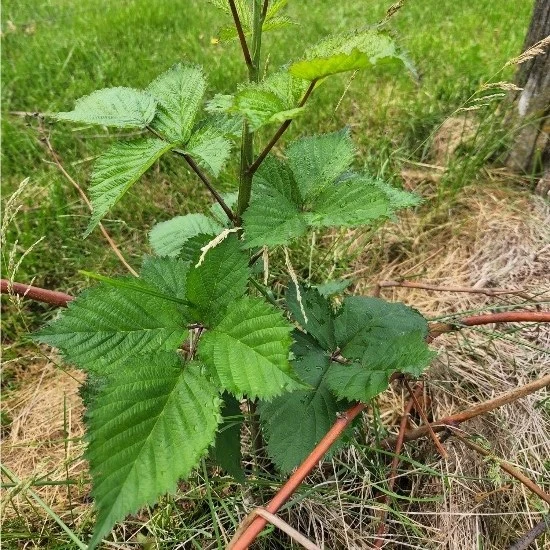
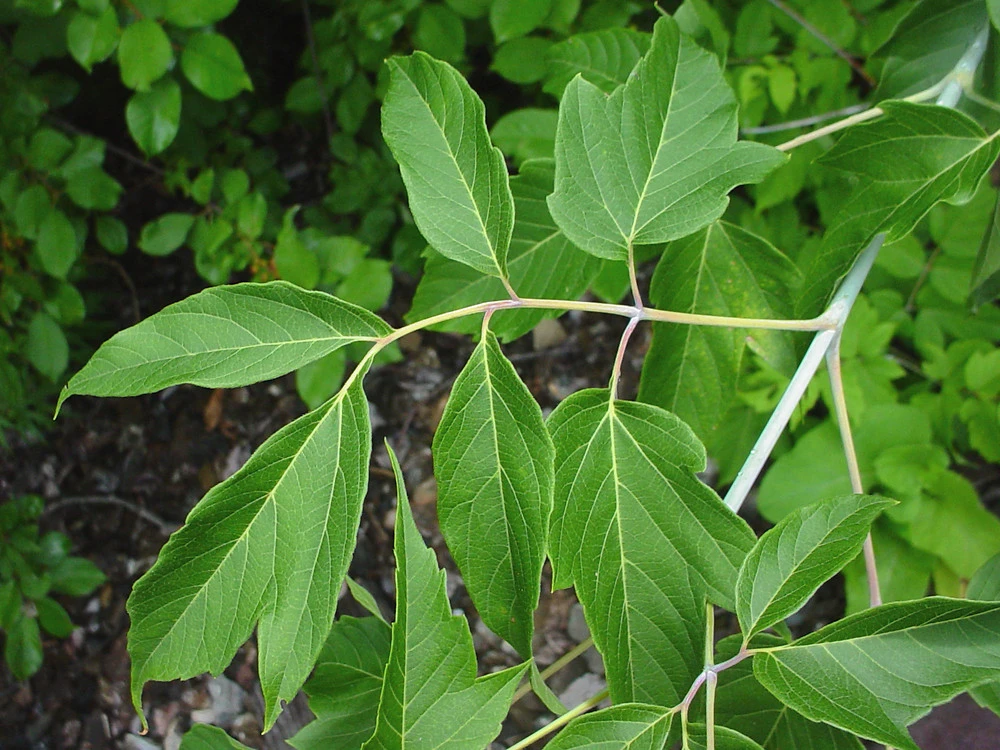

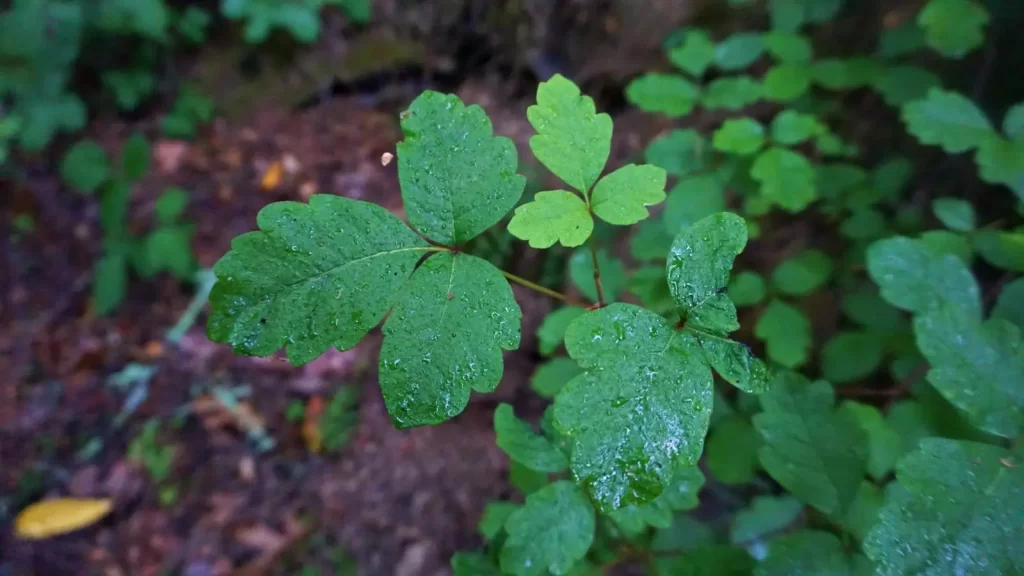
How to Tell the Difference:
- Count the leaves – true poison ivy has three.
- Check for thorns – if present, it’s not poison ivy.
- Observe how it grows – vine, shrub, or ground cover?
- Examine leaf edges – poison ivy edges can vary, but some imitators have more consistent shapes.
Being able to distinguish poison ivy from look-alikes ensures you’re not avoiding safe plants or, worse, misidentifying a harmful one.
6. Know Its Habitat: Where Poison Ivy Grows
Knowing where poison ivy grows is half the battle when it comes to avoiding it. Poison ivy is an incredibly versatile plant that thrives in a wide variety of environments across the U.S.
Common Locations:
- Forest edges and clearings
- Roadsides and ditches
- Riverbanks and lakeshores
- Fences, stone walls, and utility poles
- Gardens and suburban yards
Geographic Range:
Poison ivy is found throughout most of the continental United States, except in desert areas and high-altitude mountainous zones. It is especially common in the Midwest, Northeast, and Southeast. Western states often deal more with poison oak, though poison ivy is still present in some areas.
Environmental Preferences:
- Thrives in partial shade to full sun.
- Grows well in moist, well-drained soils, but can also survive in poor, rocky soil.
- Often appears in disturbed soil areas such as construction sites or newly cleared land.
Knowing where poison ivy likes to grow allows you to be proactive. If you frequent wooded trails or garden near wooded property lines, keep a close watch for suspicious foliage.
7. Check for Seasonal Changes in Appearance
Another effective strategy to identify poison ivy is to be aware of its seasonal transformations. This plant undergoes several changes throughout the year, each with distinct visual characteristics.
- Spring:
- New leaves emerge reddish or bronze.
- Leaves may appear shiny and soft.
- Growth is vigorous; vines may start climbing or spreading.
- Summer:
- Mature leaves turn deep green and often appear glossy.
- Flowers may appear in small, yellowish clusters.
- Berries begin forming—small, greenish-white drupes.
- Fall:
- Leaves change to vibrant red, orange, or yellow.
- Berries ripen and attract birds.
- The plant becomes more woody and tough.
- Winter:
- Leaves drop, but vines and stems remain toxic.
- Bare vines with aerial rootlets are easy to miss but still dangerous.
The ability to identify poison ivy year-round ensures that you’re protected no matter the season. Many people make the mistake of thinking the plant is harmless in winter, but the urushiol oil remains potent even when the leaves are gone.
How to Avoid Contact and What to Do If Exposed
Identifying poison ivy is only half the battle. The next step is knowing how to avoid exposure and what to do if you accidentally come into contact with the plant.
How to Avoid Contact:
- Wear long sleeves, pants, and gloves when working outdoors.
- Use barrier creams or ivy-block products when hiking.
- Stay on cleared trails and avoid walking through dense underbrush.
- Clean gear and pets after outdoor activities—urushiol can cling to fur and equipment.
What to Do If Exposed:
- Act Quickly – Within 10–15 Minutes: Immediately rinse the affected skin with lukewarm, soapy water or use rubbing alcohol to remove the urushiol oil.
- Clean Contaminated Items: Wash your clothes, shoes, tools, and pets—urushiol can linger and cause repeated exposure.
- Avoid Scratching: Scratching can cause infection. If itching begins, apply cool compresses or calamine lotion.
- Use OTC Treatments: Apply hydrocortisone cream, antihistamines (like Benadryl), or colloidal oatmeal baths to relieve itching and inflammation.
- Monitor Symptoms: If a rash develops, it may last 1–3 weeks. See a doctor if you experience swelling, trouble breathing, or a rash on your face/genitals.
- Do Not Burn the Plant: Never burn poison ivy—inhaling urushiol fumes is dangerous and can damage your lungs.
Being informed and prepared minimizes the risk of an allergic reaction and shortens the recovery time if you do get exposed.
The Surprising Benefits of Poison Ivy: Nature’s Misunderstood Plant
Birds such as robins, cedar waxwings, and other songbirds rely on poison ivy berries for food—especially during the winter months when other resources are scarce. In fact, over 60 species of birds are known to eat poison ivy berries. Poison ivy, while a nuisance to humans, serves as a valuable food source for various animals, including cottontails, deer, and even goats in wildlife sanctuaries.
Conclusion
Learning to identify poison ivy is a valuable skill for anyone who spends time outdoors. From its three-leaf pattern to seasonal changes and habitat preferences, poison ivy offers several clues that, when recognized, can help you steer clear of a painful rash. By using the seven identification strategies outlined above, you’ll build a confident eye for spotting this troublesome plant in any environment.
Remember, poison ivy is deceptive in appearance and adaptable in form. Always keep a cautious eye when navigating natural spaces, and when in doubt, follow the golden rule: Leaves of three, let it be.

